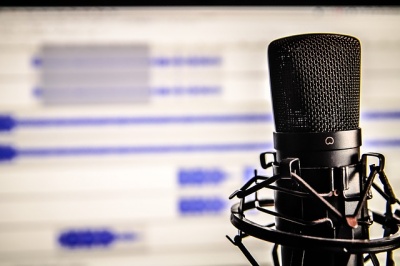DS4OERS/Audiographic/Transcript
From WikiEducator
In this section, you will produce a script and record the audio for your audiographic.
Advantages of preparing a script
Preparing a script word-for-word before you record the audio has a number of advantages:
- If you are unfamiliar with speaking without advance preparation, writing out a script will improve your confidence in producing a good recording. It will also help to minimise the use of 'filler' words like "Um" and "Ah" in your recording
- Preparing all the words for your recording in advance will help you include all important information, particularly if you are covering a complex topic
- The script will help with the pronunciation of any unfamiliar words, because you can research the correct pronunciation and practise before you start recording
- Using a script will help you with time management of the recording, because you can practise the timings before you start recording
- A script will save time in producing captions for your video, when sharing the recording on platforms that support captioning. Captions improve the accessibility of your resource because:
- You can share a copy of the script in print form for students who don't have reliable or affordable access to the internet
- People who are deaf or hard of hearing can use the online video captions when watching the video
- People with learning disabilities may understand the content better if they can see and hear the message
- The video can still be used in silent environments - for example, in a library when the user does not have head-phones
- A script will save time for anyone adapting the OER - for example, translating the captions into another language
Tips for preparing and recording your script
Remember that an audio script is intended for listening, not reading. The following guidelines will help you make a good audio recording;
- Use a friendly, conversational style (rather than a formal writing style)
- Keep sentences short, and avoid complex sentence structures. Complex sentences are hard to understand when listening. They also mean that captions are often spread across multiple screens (if adding captions at a later date)
- Include pauses in the text to break up large blocks of text. (This is where the reader can wait and breathe before continuing). Write [PAUSE] in the text between square brackets, so the reader knows where to pause. You could also separate long paragraphs of text by introducing additional slides
- Check your text for correct grammar. Although listeners will not 'see' any spelling mistakes in the recording, you should correct any mistakes so that you can share the script as an extra resource
- Avoid acronyms (e.g. NATO, NASA, WTO...), unless you are sure your audience will understand them. If you do include acronyms, write them out in capital letters with hypens, so that when you are reading you know to read out the letters rather than the 'word'
- Record a separate audio file for each slide, and use different names for each audio file - for example, Photosynthesis_Slide_1.wav; Photosynthesis.Slide_2.wav etc. This will save time when combining the individual audio files with the corresponding slide image
- Make sure your text is large enough to read easily (e.g. 12pt Times Roman). Using 1.5 or double spacing will provide space for any notes you make about content you might need to emphasise - you won't say these when you're recording!
- Practise reading your script out loud a few times before recording. Use the opportunity to add notes for any words that need emphasis in the recording, and make any changes now, before recording the script
- When recording your audio:
- Try to find a quiet place without distractions. Tell family members or colleagues that you are recording, to avoid any interruptions
- Imagine you are reading to a good friend, and use a friendly voice
- Practise using 'Keyboard shortcuts' (or 'hotkeys') to record and pause. These shortcuts are easier and quicker to use, rather than moving the mouse. In Audacity, press "R" to Record and "P" to pause the recording. Pausing is good if you need to breathe or take a break
- If you make a mistake, just carry on. Filler words (e.g. "Um" or "Ah") can be deleted from the track when editing the file. Also, recording a separate audio file for each slide means you only need to re-record a short piece of text, if the mistake can't be fixed via editing. Some 'mistakes' can help your recording sound natural and authentic. Remember, you are not a professional broadcaster and your students know this!
